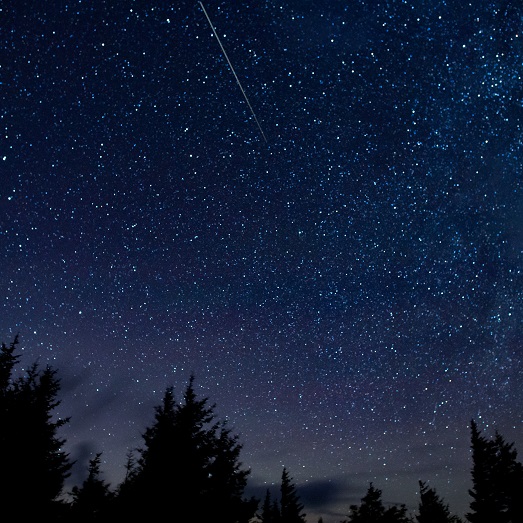 Web Content Display
Web Content Display

Meteor Shower
Tab Menu
 Web Content Display
Web Content Display

The Perseid meteor shower is active between 17 July and 24 August this year, and will reach its peak on 12 August. It is estimated that the Zenith Hourly Rate (ZHR) of the meteor shower can reach 100 during the peak period. The radiant of the Perseid meteor shower will rise in the northeast at about 10 pm. More meteors should be seen when the radiant is at a higher altitude. However, as the peak lies on the nineteenth day of the lunar calendar, the influence of moonlight will be great, resulting in poor observation conditions.
The parent body of the Perseid meteor shower is a comet called 109P/Swift–Tuttle. When it travels through the Solar System, a large amount of debris is left. When the Earth passes through these debris in space as it orbits around the Sun, a large amount of debris falls into the Earth's atmosphere, forming a meteor shower. Since these debris are from the same origin, all meteors emanate from the same point called the radiant. When the radiant of the meteor shower is in the constellation Perseus, we call this meteor shower as the Perseid meteor shower.
Information about the peak of Perseid meteor shower 2025:
| Date and time | Zenith Hourly Rate* |
|---|---|
| 9:15 pm, 12 August | 100 |
* The Zenith Hourly Rate (ZHR) is the extrapolation hourly rate of meteors observable in an extremely dark and wide sky with the radiant located at the zenith. As some meteor showers have very short peak periods, observers sometimes extrapolate the number of meteors observed in ten and a few minutes to an hourly number in proportion. Therefore, the Zenith Hourly Rate cannot be regarded as the actual number of meteors visible in one hour. Yet, it can be used as a meaningful comparison between the activity of different meteor showers. Some meteor showers can be as inactive as having single digit Zenith Hourly Rate. There are "three major meteor showers" (Quadrantid meteor shower, Perseid meteor shower, and Geminid meteor shower), which have the ZHRs reaching 100 or even higher values, and hence worth watching.
(Source: International Meteor Organisation)
Replay the live streaming of the Perseid meteor shower 2024 on HKSpM YouTube Channel.
Here are some tips for watching the Perseid meteor shower:
- There are still a certain number of meteors around the peak period. 1-2 days before and after the peak period is also suitable for observation as long as the weather is fine.
- Meteors do not necessarily appear near the radiant, and most of the meteors are dim. Observers should choose a site with a large unobstructed view and low light pollution. Staying away from other light sources can help your eyes become more sensitive to light.
- Basically, a telescope is not required as meteors are better observed by naked eyes. You may bring along with you a star-map, a red torch, a deck chair and a sleeping bag or blanket. Please observe stargazing manner and refrain from using excessive light as this will affect other stargazers.
- To photograph meteors, a camera with long-exposure function and a wider angle lens are essential. After focusing on starlight, point the camera to the zenith or the darkest area on the sky and set an appropriate aperture and ISO value (such as F2.8 or lower, ISO 800 or higher, depending on the design of the lens and camera, as well as the nearby environment). Then select the time of exposure based on whether a star tracker is used. In general, a longer exposure gives you a higher chance of capturing unexpected meteors. For long exposure you may consider stepping down the aperture to say, F4 or F8 and ISO value to 400 for better image quality. The star image distortion due to camera shaking can be solved by using a remote control or the self-timer function on the camera.
